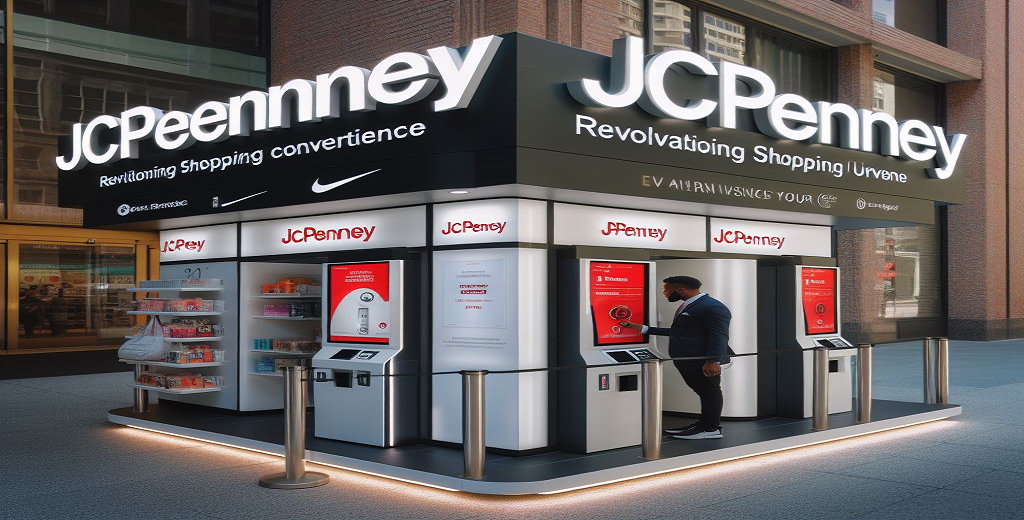As a developer, choosing the right tech stack for your project is important for its success. When it comes to building modern applications, developers often face the decision between LAMP and MERN. Both these web development stacks offer distinct advantages and the choice depends largely on the project’s requirements.
If you’re looking for a solid, tried-and-true setup for traditional websites or content-heavy applications, LAMP might be your best bet. However, if your focus is on creating highly interactive, scalable applications with real-time capabilities, MERN is a better choice. Nowadays, such applications are gaining popularity since they can meet user expectations and handle growing demand effectively. It’s one of the major reasons why many organizations are hiring MERN stack developers.
This blog explores both stacks in detail and helps you determine which one aligns best with your project.
Components of LAMP Stack
The LAMP stack is made up of four key components:
- Linux: The operating system that acts as the foundation. It’s known for being stable and secure.
- Apache: A powerful web server that handles requests from users and serves them the right web pages. It’s reliable and widely used.
- MySQL: A database management system that stores data in a structured format. It’s great for handling large datasets and supports SQL for querying.
- PHP: A server-side scripting language used to create dynamic web pages. It interacts with the MySQL database and sends data to the frontend.
Components of MERN Stack
The MERN stack includes these technologies:
- MongoDB: It’s a NoSQL database that stores data in a flexible, JSON-like format. It’s perfect for handling unstructured data.
- Express.js: A lightweight framework for Node.js that simplifies building web applications and APIs.
- React: React is a JavaScript library for building user interfaces. React makes it easy to create dynamic, single-page applications with interactive features.
- Node.js: A runtime environment that allows you to run JavaScript on the server side. It’s known for its fast, non-blocking, event-driven architecture.
Key Differences Between LAMP and MERN
Whether you decide to go with LAMP or MERN for your next project, it’s necessary to understand the unique features of these full-stack development technologies. Let’s have a look at the differences based on these parameters:
1. Architecture: LAMP vs MERN
LAMP is a traditional stack designed around a client-server architecture where the server handles much of the logic. It uses PHP to render pages on the server and then delivers static HTML to the client. This method works well for websites where the content remains relatively static or doesn’t require a lot of interactivity.
On the other hand, MERN is based on a modern JavaScript framework. It’s a full-stack JavaScript solution, meaning both the client-side and server-side code are written in JavaScript. This consistency between the frontend and backend speeds up development and makes it easier for developers to work across the stack without constantly switching between languages.
2. Database Management: Relational vs NoSQL
LAMP uses MySQL, a relational database management system (RDBMS). This means it uses tables to store data in a structured format. For developers, this can be helpful when dealing with complex data relationships (e.g., when you need to run complex queries or join multiple tables). It’s also perfect for applications that require consistency and compliance with ACID (Atomicity, Consistency, Isolation, Durability).
MERN, in contrast, uses MongoDB, a NoSQL database. Instead of storing data in tables, MongoDB stores it in flexible, JSON-like documents. This allows for more scalability and flexibility, especially when dealing with large amounts of unstructured data. If your project involves handling diverse data types or rapid changes in the schema, MongoDB is the way to go.
3. Frontend Framework: Server-Side Rendering vs Dynamic UIs
In LAMP, PHP handles the server-side logic and then the server sends static HTML to the client. When the page loads, it doesn’t update unless the server sends a new page, making it a bit slower when it comes to dynamic interactions. This approach works well for blogs or corporate sites.
MERN, however, uses React for its frontend. React allows you to create dynamic, interactive UIs by rendering components efficiently. React updates only the parts of the page that need changing rather than reloading the whole page, which makes the user experience smoother.
4. Performance: Handling Traffic and Speed
LAMP is a time-tested stack that’s known for its stability. But, because it processes each user request on the server side, it can be slower in handling high traffic, especially when real-time interactions are involved. The server has to regenerate the HTML for each request, which can slow things down when handling numerous concurrent users.
MERN, due to its non-blocking I/O in Node.js, can handle multiple requests simultaneously without getting bogged down. This asynchronous nature allows the stack to serve high-traffic applications, especially those requiring real-time data (like chat applications or live feeds). MERN’s use of Node.js enables it to handle requests faster, making it more suitable for modern web applications.
5. Learning Curve: Familiarity and Ease of Use
LAMP’s technologies, Linux, Apache, MySQL and PHP, have been around for a long time, and many developers are familiar with them. This makes LAMP relatively easy to pick up, especially for those already comfortable with PHP and relational databases. However, as projects grow, LAMP’s architecture may not function as desired. This difficulty can be experienced when you need to scale or introduce more dynamic features.
MERN, being a newer stack, can have a steeper learning curve, particularly for MERN stack developers who aren’t familiar with JavaScript or Node.js. However, MERN has a unified stack (with JavaScript used everywhere), which makes things easier to some extent. Additionally, modern frameworks like React and Express provide powerful tools for building scalable, real-time applications, though they come with their complexities.
The key differences between LAMP and MERN lie in their approach to handling data, user interfaces and scalability. LAMP is a time-tested, server-side rendering stack that is well-suited for traditional websites, offering a reliable and straightforward architecture. However, MERN, with its modern, client-side React framework, provides a more dynamic, real-time user experience, making it the preferred choice for interactive, data-driven applications. MERN’s ability to handle complex features efficiently, combined with the flexibility of Node.js and MongoDB, offers a more agile and scalable solution for evolving business needs.
As a result, many businesses are migrating their LAMP-based applications to MERN to meet the growing demand for dynamic, high-performance and scalable web applications.
Pros and Cons of LAMP Stack
Pros:
- Stability and Reliability: LAMP stack is known for its rock-solid stability, and is an excellent choice for long-term projects. It has been around for years, and is apt for businesses looking for a dependable solution.
- Extensive Support: The LAMP ecosystem, with its wide usage, offers huge community support. This means when you face issues help is just a few clicks away.
- Security: Since LAMP uses widely used technologies (Apache, MySQL, PHP), security holes are well-documented, and vulnerabilities are quickly patched.
- Low Cost: All components of LAMP (Linux, Apache, MySQL, PHP) are open-source, which keeps costs low. The hosting options are often cheaper as well since LAMP is widely supported by web hosts.
Cons:
- Performance in Complex Apps: While LAMP is fantastic for simpler applications, it can struggle with complex, real-time, or highly dynamic applications. It’s not designed to handle such intensive needs as efficiently as newer stacks.
- Scalability: As your app grows, scaling with LAMP can be a challenge. It was designed for traditional websites and pushing it to handle modern app architectures may require workarounds.
- Less Flexibility: The rigidity of LAMP’s architecture creates a hindrance for developers who want to experiment with new technologies. It’s not as flexible as stacks built for the modern web.
Pros and Cons of MERN Stack
Pros:
- Full JavaScript Stack: One of the biggest advantages of MERN is that it uses JavaScript across the entire development process (frontend and backend). This reduces the learning curve, speeds up development, and makes it easier for MERN stack developers to switch between tasks.
- Scalability and Flexibility: MERN is built for scalability. With its non-blocking I/O and real-time capabilities, it can handle apps that grow quickly and need to support a high number of users.
- Rich User Interfaces: React, the frontend framework of MERN, is fantastic for building interactive and dynamic UIs. Its component-based structure makes it easier to manage and scale complex interfaces.
- Real-Time Features: Thanks to Node.js and MongoDB, MERN excels at building real-time applications like messaging apps, live feeds, or collaborative tools.
Cons:
- Complexity of MongoDB: While MongoDB’s flexibility is an advantage, it can be a disadvantage if not used correctly. Developers need to understand how to manage data schema and relationships to avoid data issues.
- Smaller Community: Although MERN is growing fast, its community is still smaller compared to LAMP. This means finding solutions to issues can sometimes take a bit longer.
- Learning Curve for New Developers: If you are new to JavaScript or Node.js, the learning curve can be steeper compared to PHP, which is simpler to get started with.
When to Choose LAMP Stack?
LAMP stack is an excellent choice for:
- Traditional Websites: LAMP is great for simple, content-driven websites like blogs, portfolios and informational sites. If your project is focused more on structure and content than on complex user interactions, LAMP is ideal.
- E-commerce Platforms: If you’re building an online store with a manageable product catalog, LAMP’s MySQL database offers solid data management.
- Stable & Mature Projects: When working on projects that demand long-term stability, like government sites or legacy systems, LAMP’s proven track record of reliability is hard to beat.
When to Choose MERN Stack?
You can go with the MERN stack for:
- Dynamic User Interfaces: MERN shines in building interactive and dynamic single-page applications (SPAs). If you’re creating a real-time web app where users need instant feedback, MERN’s React frontend is perfect for this.
- Real-Time Applications: For chat apps, notifications or live updates, MERN’s architecture with Node.js and MongoDB excels. Its non-blocking I/O gives it an edge for handling real-time data streams.
- Modern Development & Scalability: If you’re planning a scalable application that needs to grow with time, MERN is a robust solution. The flexibility of MongoDB, combined with Node.js, makes it easy to handle increased traffic.
Cost Considerations
When deciding between LAMP and MERN, the costs can vary based on your project needs and team expertise.
For LAMP, you’ll often find lower initial development costs. LAMP technologies (Linux, Apache, MySQL, PHP) have been around for a long time, so it’s easier to find developers with experience. Hosting is typically cheaper as well, especially with shared hosting options for PHP and MySQL-based projects.
On the other hand, MERN can have a higher upfront cost. With technologies like Node.js and React, you need developers who are well-versed in JavaScript, which can make talent harder to find and more expensive. Plus, hosting for Node.js applications often requires cloud solutions, which might incur higher costs compared to traditional servers.
LAMP vs MERN Comparison: A Quick Look
| Parameter | LAMP | MERN | Winner |
| Stability and Reliability | Known for solid stability and long-term reliability. | Reliable, but newer technologies make it less proven. | LAMP |
| Scalability | Can face challenges when scaling complex apps. | Built for scalability and high-traffic apps. | MERN |
| Flexibility | Less flexible with newer web technologies. | Highly flexible with JavaScript and modern frameworks. | MERN |
| Performance for Dynamic Apps | Struggles with complex, real-time apps. | Excellent for real-time apps and dynamic UIs. | MERN |
| Security | Strong security due to its mature ecosystem. | Security is strong, but it needs a proper setup. | LAMP |
| Community Support | Large, mature community with extensive resources. | Growing community, but smaller than LAMP. | LAMP |
| Cost | Low cost due to open-source and cheap hosting options. | Costs may be higher for hosting Node.js apps. | LAMP |
| Learning Curve | Easier for PHP developers with a smaller learning curve. | Steeper learning curve for new JavaScript developers. | LAMP |
| Real-Time Capabilities | Not ideal for real-time applications. | Built for real-time applications (e.g., chat, live updates). | MERN |
| User Interface Development | Basic server-rendered UI. | React provides a modern, dynamic, and interactive UI. | MERN |
Conclusion
You need to evaluate your project’s unique needs before choosing LAMP or MERN. The right web development stack will align with your project’s scale, complexity and performance requirements. Understanding these nuances will help you make a more informed decision for your next project. Whether you’re leaning towards LAMP or MERN, select wisely to meet your goals and deliver a successful product.
FAQs
1. What are the key benefits of using a full-stack JavaScript solution like MERN?
The major benefit of MERN is that it uses JavaScript across the entire stack, which allows developers to use the same language on both the frontend and backend. This reduces the context-switching between languages and improves development speed. This feature is very useful for projects that require dynamic and interactive features.
2. How does MongoDB compare to MySQL in terms of scalability?
MongoDB is designed for scalability, particularly in handling large amounts of unstructured data. Its NoSQL structure allows for flexible schema designs, making it easier to scale horizontally by adding more servers, unlike MySQL, which requires vertical scaling for handling large datasets.
3. How does the learning curve of MERN compare to LAMP for new developers?
For beginners unfamiliar with JavaScript or Node.js, MERN is harder to grasp. This isn’t the same with LAMP. Since LAMP is based on PHP, it has a lower learning curve for developers with experience in server-side scripting and relational databases.
4. Can the MERN stack handle complex SQL-like queries as effectively as LAMP?
While MongoDB in MERN can handle complex queries, its NoSQL nature makes it less suited for complex JOIN operations and relationships compared to MySQL in LAMP. For relational data that requires advanced querying, LAMP’s SQL structure remains more efficient.
5. What are the security challenges that come with the MERN stack?
MERN’s security challenges mainly arise due to its modern stack and the integration of multiple technologies. Developers must ensure proper security measures are in place for each layer, including authentication, authorization, data validation and secure API management to prevent vulnerabilities like injection attacks or data breaches.












